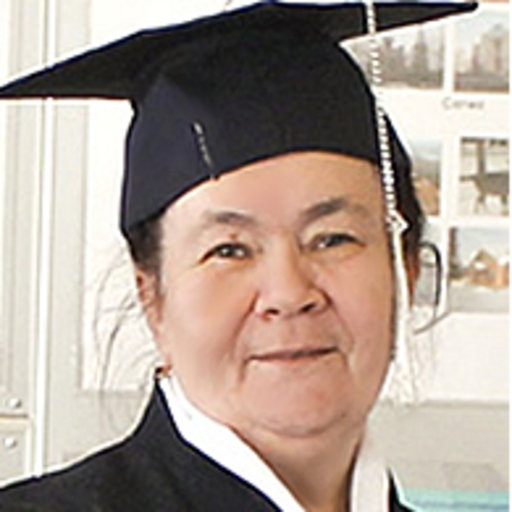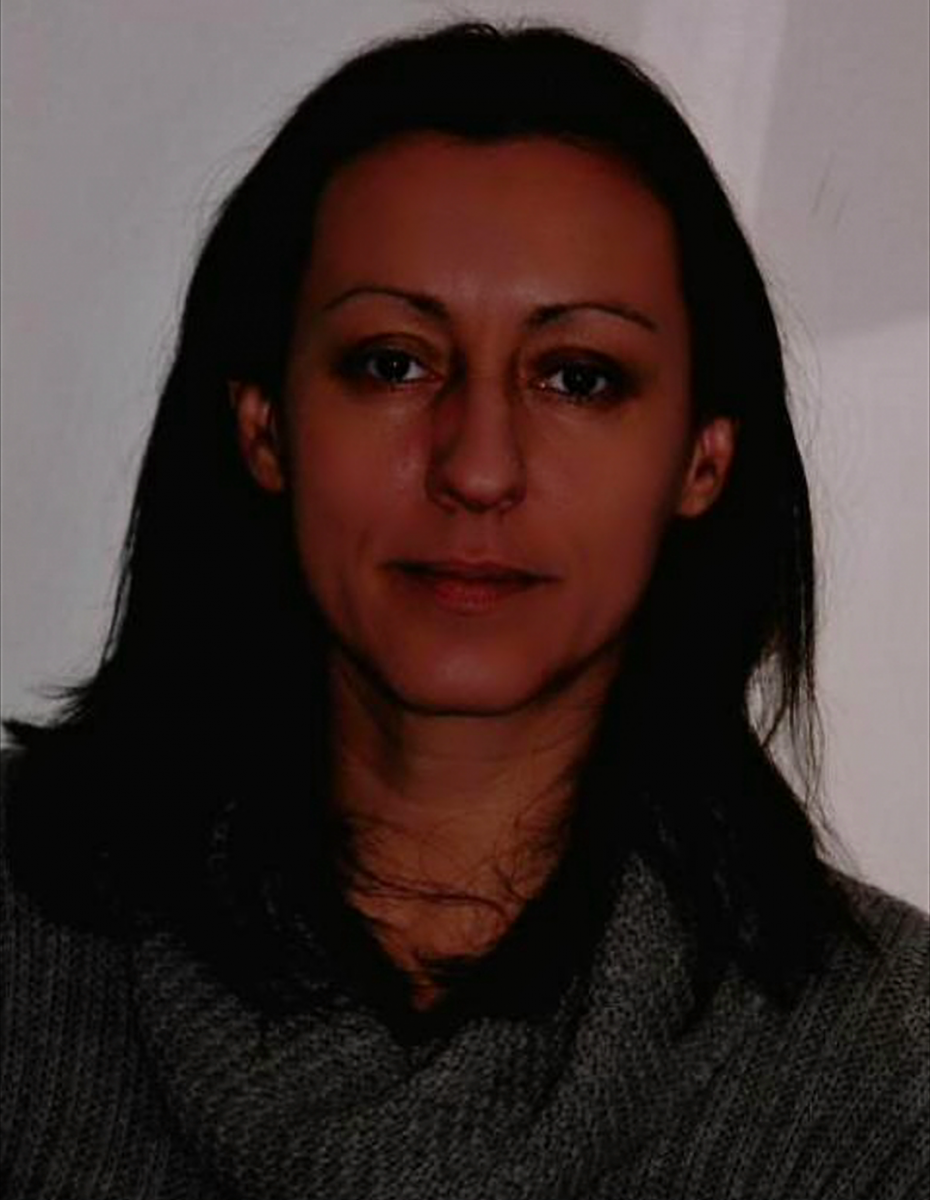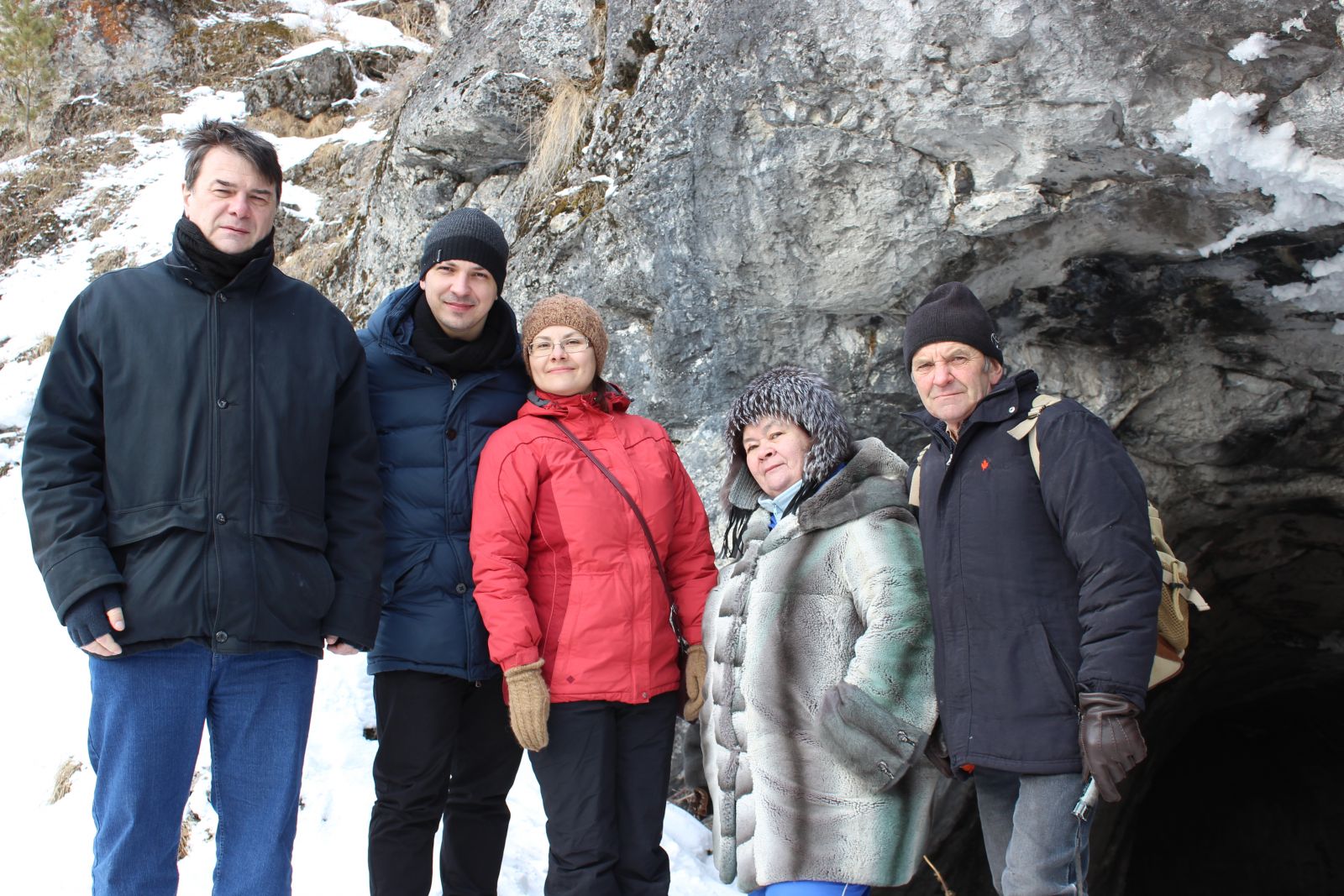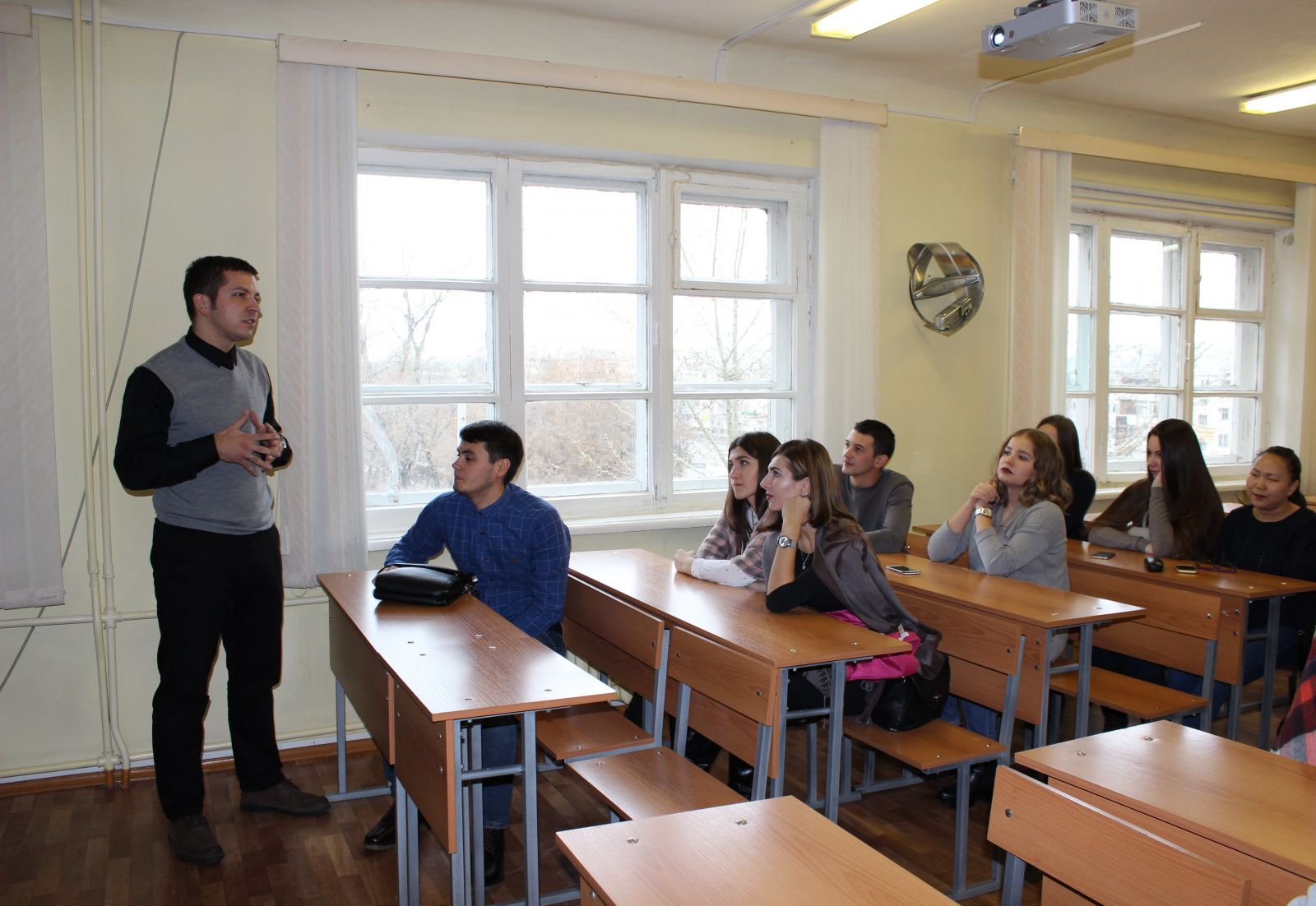One of the key projects in the project-based learning offered by the Institute of Sport, Tourism and Service (ISTiS) is called Sustainable Development of Tourism in the Ural Region. Today the network of travel itineraries across South Ural is being expanded, and foreign specialists are being engaged by SUSU to the develop tourism in our region.
We talked to the Head of the SUSU Department of Tourism and Socio-Cultural Service, Doctor of Sciences (Pedagogy), Professor and the project supervisor Tatiana Tretyakova about elaborating the concept of sustainable tourism development in our region, about creating the technique for assessing the condition of the region’s tourism and recreation complex, about integrating the research-and-education activity of the academics of the Department of Tourism and Socio-Cultural Service of the SUSU Institute of Sport, Tourism and Service with that of their colleagues from Serbia, as well as about involving the ISTiS Master’s students into the project, and much more.
– Professor, please tell us how the project idea came into being?
– We started our study of the concept of sustainable tourism development in our region last year. While performing research on the assessment of the recreation potential we came across a fact that studies in this field in Russia and abroad differ significantly. Our methods of studying recreation tourism, which are based on fundamental research by Russian scientists, are not always acceptable abroad.
Within the frameworks of this project we are discussing various aspects of tourism development based on fundamental theory with our colleagues from the SUSU parent university, Geographical Institute Jovan Cvijić of the Serbian Academy of Sciences and Arts. They use different approaches to assessing a region’s recreation potential abroad.

We are striving to determine areas of common interest for joint research with our foreign colleagues. With regard to geography this means contingency with the scientific-and-theoretical basics, with our green territories, and with eco-tourism zones in South Ural region. This is what our collaboration with our colleagues from Serbia began with. It is very difficult to find any information on studies of the Chelyabinsk Region territories of special protection, and it can be easily explained by the fact that our region has been a restricted-access territory for a long time. We have already travelled to Taganay and Zyuratkul with our colleagues from Serbia. Together we have analysed the current situation in our region’s domestic tourism, and have worded the topic of our research as elaboration of the concept and strategy of sustainable tourism development in South Ural.
Our tasks as of today include elaborating the technique of assessing the condition of development of our region’s tourism and recreation complex, implementing the methodology of improving the quality of tourism services in our region, and creating a model of promoting the territory’s tourism product at the domestic and international market. Tourism in South Ural region is seasonal for now. We are striving to search for new ways of developing it, so that it could become year-round all-season tourism over time.
In prospect the tourism cluster of South Ural should be offering different types of travels to the potential customers, suiting any taste and various groups of population. Having discussed these issues with our colleagues, we came to a decision that we should focus on the sustainability of tourism on the territories of natural zones.
Thus, at first we came up with an interesting research topic, and later with a project-based learning in this field. This topic covers the interests of both young and prominent scientists. It was how Master’s student Tatiana Shmeleva took up the topic of South Ural thermal springs already back in the time of her Bachelor’s studies. At a conference in Naples she delivered a presentation on Thermal Springs of Tyumen.
Her article in the conference’s collected papers was indexed with Scopus international scientific database. Our colleagues from Serbia also considered this topic to be relevant. There are very little publications on the analysis of the thermal springs status in the Ural Federal District, so in this context this topic is especially relevant.
We have given credence to the recommendations of our colleagues. The methodological aspect of our research was influenced by them in many ways. The second field of our research is related to recreation zones for sports tourism. Our colleagues from Serbia are also studying recreation tourism.
– Please tell us more about the role of the colleagues from Serbia in this project?
– Milan Radovanović, Ph.D. of the Geographical Institute Jovan Cvijić of the Serbian Academy of Sciences and Arts, supervises the project work on the part of Serbia. He is our project’s curator on behalf of the Serbian Academy of Sciences. He supervises all our works. Moreover, each field is guided by a certain academic (Milica Pecelj, Jovana Brankov, Aleksandra Vujko, Marko Petrović). All the academics are leading specialists in geography and tourism research methodology.


For instance, Professor of the Geographical Institute Jovan Cvijić of the Serbian Academy of Sciences and Arts Marko Petrović teaches tourism research methodology and methodology of tourism modelling and designing. All these academics are research fellows at our Department and are already working with our students. In the end of November of 2018 the lectures on geography by Milica Pecelj, Professor of the Geographical Institute Jovan Cvijić of the Serbian Academy of Sciences and Arts, began at our Institute.
– What is the role of Master’s students in this project?
– We have seven Master’s students involved in this work. Three territories of special protection were chosen as the objects of study: Taganay National Park, Zyuratkul National Park, and Arkaim Natural Reserve. The first two are mountainous areas. And Taganay is also a wooded territory, Zyuratkul is a lakes region, and Arkaim is a historical and archaeological museum. The Master’s students were assigned respective territories. Two people are dealing with Taganay National Park, three people – with Arkaim, and two – with Zyuratkul. Thus we have formed the geography of the project-based learning.
The main role of the Master’s students in the project-based learning at this stage is polling, processing and analysing the collected questionnaires. They will currently be engaged in the assessment of our region’s tourism potential and in the studying of the methodology. Based on the analysis of the obtained data, publications will be prepared, which in prospect will be indexed with Scopus and Web of Science. Along with the academics students will become co-authors of the articles, and these will be their first publications.
The main goal for the Master’s students within this project is, using foreign publications, to learn how to work with modern foreign techniques of studying tourism and foreign technologies. In Russia we do not have a science called Tourism Studies as of yet, but it is being actively and fruitfully developed abroad. A perfect result of the project would have been an elaborated Ph.D. programme in Tourism Geography.
.jpg)
– What has already been accomplished within the project?
– Our colleagues suggested a technique to us, which implies studying territories by analysing focus groups of tourists traveling in these territories. Broadly speaking the polling aims at finding out how the work of a national park influences the population, and how the population influences the work of the national park. These two aspects are interrelated, but we are planning to prepare research papers on different topics using the results of analysing the collected materials.
We performed polling at the national parks of Taganay and Zyuratkul. At Taganay National Park 305 questionnaires were collected. We are trying to pinpoint which types of accommodation and services offered by the national parks’ administrations the tourists use.
The polling data are collected manually, and then are uploaded into computer.
Further on, we are planning on working with the population of the nearby territories in the border zone of the national parks. On the territory of Taganay National Park these include Magnitny settlement, Pushkinsky settlement, and the city of Zlatoust. These are the three territories, which actively influence the development of Taganay, and which are being by Taganay itself (by its natural tourism component). The National Park constantly assists us in our work. We are in permanent contact with them. They suggest their variants of questionnaires to us. The Master’s students personally do the polling of tourists and population of the cities and settlements bordering the national parks.
Back when we just started our work with tourists, we had only four questionnaires, and as people were not really willing to cooperate, we were collecting no more than four questionnaires a day. But appetite comes with eating, and experience – with working.
It is wonderful that the Administration of Taganay National Park is actively interacting with us. They were the first to initiate our collaboration and are actively assisting us with it: both in transferring our students to the places of polling and in drawing up the questionnaires.
Once the polling at Taganay National Park was complete, we talked to Master’s student Denis Manakin.
According to Denis, it was not that easy to perform the polling since bad weather was a serious hindrance.
“We did the polling in Magnitka settlement. We managed to collect questionnaires from about 80 people, as the weather was really bad that day, with heavy snow showers and strong winds. At present we are processing the data,” shared Denis. “Everyone knows that there is a national park, but the locals do not visit it, they can only accompany their relatives or guests there. The majority of the local residents do not know all the tourist attractions of the park.”
Upon completing the polling, the Master’s students process the questionnaires on their own by uploading information into computer, testing them and in-putting into web-forms. The Administration of Taganay National Park came up with a suggestion that for them to be able to form an opinion on the current situation they need 100 filled-out questionnaires from the residents of Magnitny settlement, 300 questionnaires – from the residents of Pushkinsky settlement, and 300 questionnaires filled-out by the visitors on the territory of the park. This a huge number of people, and not everyone will agree to participate in the polling. Big work awaits our Master’s students.
Also polling will continue at Zyuratkul National Park and at Arkaim. Arkaim is the most remote natural territory of special protection. It is for the first time that we are travelling there with our colleagues from Serbia, so that we could understand the scope of the material under study. At Arkaim settlements are located at a bigger distance than those at Taganay or Zyuratkul. The scale is bigger, and the organisation is more complicated there.
But it is important that we have already established contact with the Administration of Arkaim Museum and Natural Reserve. Director of Chelyabinsk State Historical and Cultural Reserve Arkaim Ekaterina Slastukhina is very supportive of all our studies and initiatives. Part of the data have already been collected, and now we need to technically process them. We are planning on using the polling data for the material analysing and preparing articles on the assessment of our region’s tourism potential. All of it has to be documented.


– Which technique is used for computations and questionnaire processing?
– Regarding the issues of computations technique and questionnaire processing we are working with senior research fellow of the Geographical Institute Jovan Cvijić of the Serbian Academy of Sciences and Arts Jovana Brankov. She assists us with using foreign techniques on questionnaire data assessment.
Another research fellow at our Department is Milica Pecelj. Starting from November 2018 she has been reading online lectures on modern tourism research methods for our Master’s students. Specifically for that purpose we equipped one of our classrooms with web-cameras. Also one web-camera will constantly be functioning so that we could contact our foreign colleagues online. This work on behalf of our Department is being supervised by Associate Professor, Candidate of Sciences (Pedagogy) Yulia Syromyatnikova.
Among the most important fields that are being worked on at our Department is recreational tourism. At the Department it is being supervised by Candidate of Sciences (Pedagogy), Associate Professor Irina Freinkina. A foreign supervisor of this field is another senior research fellow, Aleksandra Vujko. Together with her we created a questionnaire on recreation and sports tourism in the South Ural territories of special protection. This is a future field of development of recreation and sports-and-health tourism on the territories of our natural zones. The questionnaire has already been drawn up, and more than 130 people have taken part in an Internet polling.
– What is the role of the Department of Modern Languages of the SUSU Institute of Linguistics and International Communications in the project-based learning process under your project?
– Our colleagues from Serbia are reading lectures online and in the English language. And here our colleagues from the Department of Modern Languages are helping us a lot. If anyone of the students does not understand the topic or some lecture moments, they help us out by translating professional technologically complex concepts. We were lucky to search out the Department of Modern Languages. There are things, which are professionally and technologically complex not only for students, but for academics as well. And our colleagues from the Department of Modern Languages are helping us here a lot. We are very grateful to them for it!
– What are the plans for the future within this project? What is planned to be done in the nearest future?
As per results of the analysis of the questionnaires on the natural territories of special protection we will be preparing publications indexed with Scopus and WoS. Further on we are planning on assessing recreation potential of the territories of special protection.
We took a work trip to Serbia and travelled to National Park Tara. The assessment of recreation potential of the territories of special protection was performed there using the same technique that we are working with. The territories are sort of similar, there also mountains there: we can compare the territories of the Serbian National Park Tara and Taganay National Park against the parameters of infrastructure and sustainability. According to the results of the comparative analysis of these national parks we are also planning on preparing publications indexed with international databases.
Our plans for the next year also include development of the Spelunking field, which is a relevant tourism activity in our region (educational tourism in our caves, for instance, in Serpievka cave city). We have prepared a questionnaire, which will be posted on the web-site of OGBUK Centre for Tourism Development in the Chelyabinsk Region. An electronic testing will be launched, based on which we will prepare an Internet study on tourism in the natural territories of special protection namely with regard to our region’s caving resources.




